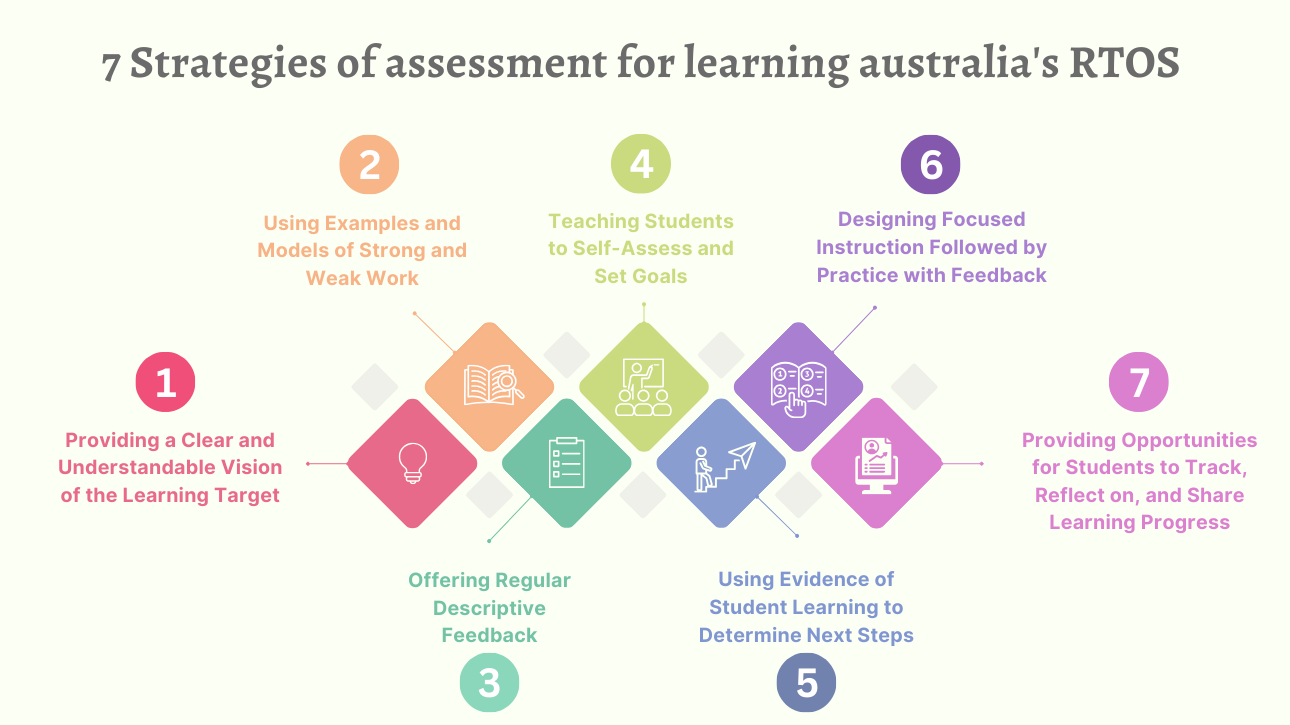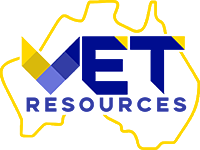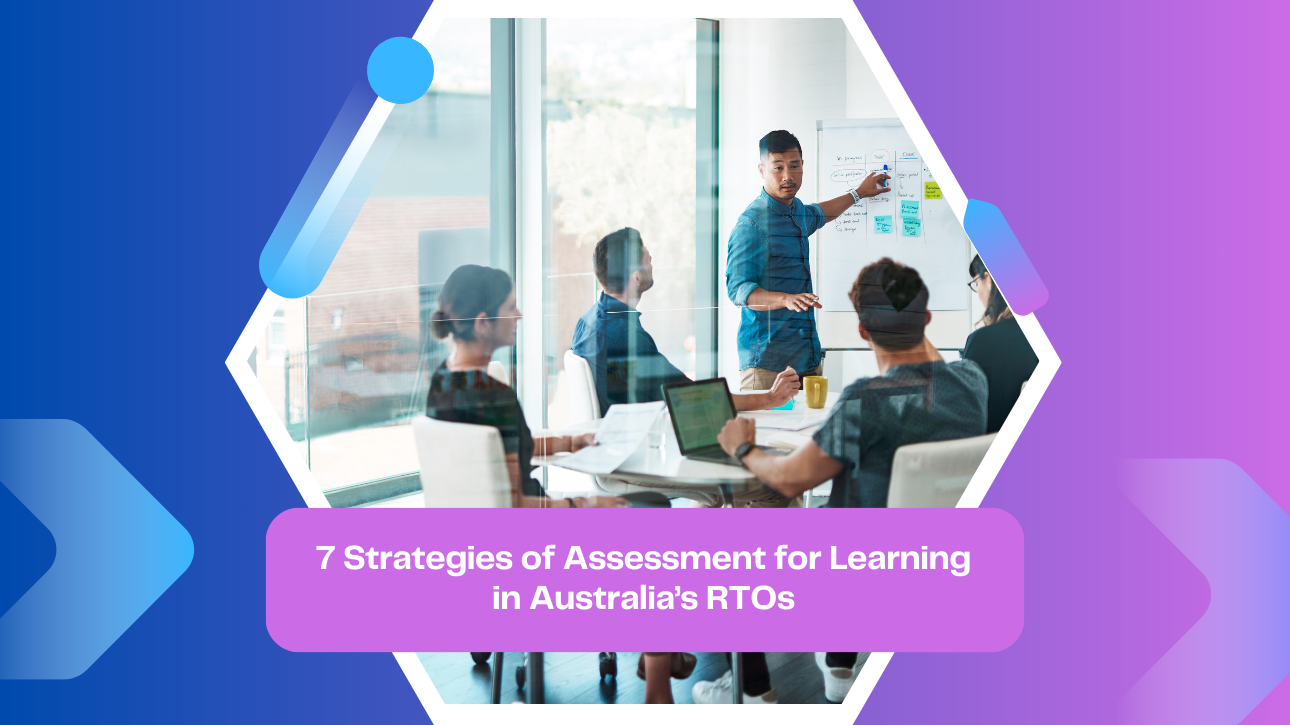Introduction
The seven strategies of assessment for learning of Australia’s Registered Training Organisations (RTOs) are essential, acting as a guiding light for student learning and academic success. Developed by Jan Chappuis and endorsed by the Assessment Training Institute, these strategies answer essential questions: “Where am I going?”, “Where am I now?” and “How can I close the gap?” They are practical tools seamlessly woven into daily teaching, assessing learning as an integral part of the educational journey and aiming to improve learning by addressing every aspect of quality in education.
Digital learning platforms like Google Play, enriched with various resources such as Pearson eTextbooks and downloadable study guides, facilitate the integration of these strategies into the curriculum. These platforms, offering helpful information and support materials, empower educators and students to explore diverse learning practices and achieve meaningful learner outcomes. As we delve deeper into each strategy, we’ll uncover how they can be effectively implemented in Australia’s RTOs to create a holistic and enriched learning experience, bridging the gap and elevating student achievement in vocational education and training.
The Concept of Assessment for Learning
Definition and Key Principles
- Definition: Assessment for Learning (AFL) is an approach where assessment activities are used to measure learning and advance it.
- Key Principles:
- Feedback: Regular, constructive feedback is essential.
- Student Involvement: Learners play an active role in their learning process.
- Adaptation: Teaching strategies are adapted based on assessment results.
Role in Student’s Learning Journey
- Guidance: AFL guides students on “Where am I going?”, “Where am I now?” and “How can I close the gap?”
- Self-Assessment: Encourages reflective skills and self-assessment, fostering independent learning.
- Goal Setting: Helps in setting and achieving learning targets.
Impact on Educational Outcomes in RTOs
- Improved Learning: Implementation of AFL strategies leads to enhanced learning outcomes.
- Student Engagement: Increases student engagement and responsibility in the learning process.
- Practical Application: Especially beneficial in RTOs for vocational education and training, aligning with the responsibilities of individuals pursuing various careers.

Strategy 1: Providing a Clear and Understandable Vision of the Learning Target
Importance of Clear Learning Targets
- Clarity: Clear learning targets provide direction and purpose, answering the question, “Where am I going?”
- Student Engagement: They enhance student engagement and focus on the learning process.
- Achievement: Clear targets contribute to improved student achievement and outcomes.
Development of Kid-Friendly Learning Targets
- Simplicity: Targets should be simple, understandable, and relatable for all students.
- Alignment: Ensure alignment with standards and curriculum.
- Communication: Regularly communicate learning targets to students to keep them informed and focused.
Connection between Activities, Assessments, and Learning Targets
- Integration: Activities and assessments should be integrated and aligned with learning targets.
- Relevance: Ensure all tasks are relevant and contribute to achieving the learning target.
- Feedback: Use assessments to provide ongoing feedback, helping students understand “Where am I now?” and “How can I close the gap?”
Real-life Application in RTOs
- Vocational Relevance: In RTOs, learning targets should have real-world relevance, aligning with vocational outcomes.
- Practicality: Focus on practical skills and knowledge applicable to the workforce.
- Adaptation: RTOs should adapt learning targets based on industry needs and learner outcomes.
Strategy 2: Using Examples and Models of Strong and Weak Work
Selection of Exemplars
- Criteria-Based: Select exemplars based on clear criteria that align with learning targets.
- Variety: Include a range of examples showcasing both strong and weak work.
- Anonymity: Use anonymous work to maintain student privacy and focus on the learning aspect.
Helping Students Differentiate between Strong and Weak Models
- Comparison: Encourage students to compare and contrast different models.
- Discussion: Facilitate group discussion and collaborative activities to explore various quality aspects.
- Reflection: Prompt reflective skills through strategic questioning, helping students identify strengths and weaknesses.
Application of Anonymous Work
- Objectivity: Anonymous work promotes objectivity and focuses on the content rather than the individual.
- Feedback: Enables peer feedback and constructive criticism, fostering a supportive learning environment.
- Improvement: Helps students understand where improvements can be made and how to enhance their work.
Encouraging Justification Using Learning Targets Rubric
- Alignment: Ensure that justifications are aligned with the established learning targets.
- Clarity: Provide clear and appropriate language in rubrics to guide student justification.
- Development: Foster the development of reasoning skills and the ability to articulate thoughts effectively.
Strategy 3: Offering Regular Descriptive Feedback
Importance of Timely Feedback
- Progress Monitoring: Regular feedback allows for continuous monitoring of student progress.
- Identifying Gaps: Helps identify gaps in knowledge and skills, answering “Where am I now?”
- Guidance: Guides how to close the gap and improve learning.
Focusing on Formative Work
- Developmental Feedback: Formative assessments offer developmental feedback, focusing on growth and improvement.
- Actionable Insights: Provides actionable insights for students to act on before a summative assessment.
- Self-Reflection: Encourages students to reflect on their learning and set goals for future teaching.
Encouraging Self-Assessment and Peer Feedback
- Self-Evaluation: Teaching students to self-assess develops awareness of their own learning needs.
- Collaboration: Peer feedback fosters a collaborative learning environment and diverse perspectives.
- Responsibility: Students take an active role in their learning, developing a sense of responsibility.
Implementation in Australian RTOs
- Vocational Context: Descriptive feedback is crucial in a vocational context, aligning with practical skills and industry needs.
- Student Engagement: Enhances student engagement and involvement in the learning process.
- Outcome Improvement: Contributes to better learner outcomes and prepares students for the workforce.

Strategy 4: Teaching Students to Self-Assess and Set Goals
Developing Accurate Self-Assessors
- Skill Building: Teach students the skills to accurately assess their work and learning progress.
- Awareness: Foster awareness of individual strengths and weaknesses through reflective practices.
- Confidence: Build confidence in students to take charge of their learning journey.
Practice on Identifying Strengths and Weaknesses
- Self-Reflection: Encourage regular self-reflection to identify areas of improvement and excellence.
- Feedback Loops: Create feedback loops with teachers and peers for continuous improvement.
- Goal Alignment: Align identified strengths and weaknesses with learning targets and goals.
Exposure to Feedback that Models Self-Assessment
- Modelling: Provide examples of effective self-assessment to guide students.
- Constructive Criticism: Teach students how to give and receive constructive feedback.
- Continuous Learning: Foster continuous learning culture and improvement through modelled feedback.
Setting Goals for Continuous Improvement
- SMART Goals: Guide students in setting Specific, Measurable, Achievable, Relevant, and Time-bound goals.
- Action Plans: Develop action plans to achieve goals and close learning gaps.
- Monitoring Progress: Regularly monitor and adjust goals based on progress and feedback.
Strategy 5: Using Evidence of Student Learning to Determine Next Steps
Making Instructional Changes Based on Understanding
- Adaptation: Adjust teaching methods and strategies based on student learning evidence.
- Responsive Teaching: Be responsive to students’ diverse learning needs and preferences.
- Enhanced Learning Experience: Adaptations provide a more personalized and effective learning experience.
Diagnosing Types of Learning Needs
- Assessment Data: Utilize assessment data to identify specific learning needs.
- Individualized Approach: Tailor teaching approaches to address the identified needs of individual students.
- Diverse Strategies: Employ various teaching strategies to cater to different learning styles and needs.
Addressing Identified Needs through Focused Instruction
- Targeted Teaching: Provide focused instruction targeting the specific needs of students.
- Practice and Feedback: Allow opportunities for practice and feedback to reinforce learning.
- Progress Monitoring: Continuously monitor student progress and adjust instruction accordingly.
Strategy 6: Designing Focused Instruction Followed by Practice with Feedback
Narrowing the Focus of a Lesson
- Specificity: Concentrate on specific components of a learning target to build competency.
- Scaffolding: Utilize scaffolding techniques to progressively build on students’ knowledge.
- Efficiency: Focused instruction leads to more efficient and effective learning.
Building Competency through Scaffolding
- Step-by-Step Learning: Break down learning into manageable steps, building on each component.
- Supportive Environment: Provide a supportive learning environment with appropriate guidance.
- Independence: Gradually reduce support as students become more competent, fostering independence.
Providing Opportunities for Revision Based on Feedback
- Constructive Feedback: Offer specific, actionable, and aimed at improvement.
- Revision Opportunities: Allow students to revise their work based on the feedback received.
- Continuous Improvement: Encourage a cycle of feedback, revision, and continuous improvement.
Strategy 7: Providing Opportunities for Students to Track, Reflect on, and Share Learning Progress
Encouraging Reflection on Learning
- Self-Awareness: Foster self-awareness through regular reflection on learning progress and outcomes.
- Goal Evaluation: Enable students to evaluate their progress towards set learning targets and goals.
- Adjustment: Encourage adjustments to learning strategies based on reflective insights.
Sharing Learning Progress
- Collaborative Learning: Promote a collaborative learning environment where students share progress and insights.
- Peer Support: Facilitate peer support and constructive feedback through shared learning experiences.
- Community Building: Strengthen the learning community by fostering mutual support and shared goals.
Developing Insights into Themselves as Learners
- Metacognition: Encourage the development of metacognitive skills to better understand one’s learning process.
- Personal Growth: Facilitate personal growth by helping students recognize their learning styles and preferences.
- Strategic Learning: Guide students in developing strategic learning approaches based on their insights.
| Strategy Number | Strategy Title | Key Focus Points |
|
1 |
Providing a Clear and Understandable Vision of Learning Target |
|
|
2 |
Using Examples and Models of Strong and Weak Work |
|
|
3 |
Offering Regular Descriptive Feedback |
|
|
4 |
Teaching Students to Self-Assess and Set Goals |
|
|
5 |
Using Evidence of Student Learning to Determine Next Steps |
|
|
6 |
Designing Focused Instruction Followed by Practice with Feedback |
|
|
7 |
Providing Opportunities for Students to Track, Reflect on, and Share Learning Progress |
|
The Impact of Implementing Assessment Strategies in RTOs

Improved Student Outcomes
Implementing the seven strategies of assessment for learning in RTOs leads to notable improvements in student outcomes. Students not only experience heightened academic achievement but also develop a diverse array of skills, including metacognition, self-assessment, and goal setting. This approach fosters personal growth and encourages reflective and strategic learning, making it a valuable asset in the educational journey.
Enhanced Learning Experience
Adopting these assessment strategies results in a more engaging and collaborative learning experience. Students become active participants in their learning journey, benefiting from adaptive teaching strategies that respond to their unique needs and feedback. This enriched learning environment, tailored to individual preferences, sets the stage for a more fulfilling and productive educational experience in Australian RTOs.
Conclusion
In the diverse and dynamic landscape of Australia’s RTOs, implementing the seven strategies of assessment for learning is pivotal for fostering academic success and personal growth. These strategies, ranging from clear learning target setting to encouraging self-assessment and reflection, have proven to be invaluable tools in enhancing the learning experience:
- Improved Outcomes: Students experience heightened academic achievement and skill development.
- Engagement & Collaboration: The learning environment becomes more engaging and collaborative, fostering peer support.
- Adaptive Teaching: Teaching strategies become more adaptive and responsive to individual student needs.
By embracing these strategies, RTOs can offer an enriched learning experience, aligning education with industry needs and preparing students for the workforce. For those seeking to delve deeper into these strategies and explore additional resources, VET Resources offers a wealth of information and support materials to further enhance your understanding and application of these assessment strategies.
Disclaimer:
The information presented on the VET Resources blog is for general guidance only. While we strive for accuracy, we cannot guarantee the completeness or timeliness of the information. VET Resources is not responsible for any errors or omissions, or for the results obtained from the use of this information. Always consult a professional for advice tailored to your circumstances.







